

Florida Currents
PEACE RIVER ELECTRIC COOPERATIVE
SEPTEMBER 2025



























An exploration of 15 ports of call, with guided excursion options at each
All onboard meals and our signature evening cocktail hour
Full enrichment package with guest speakers and nightly entertainment
All tips and gratuities

Immerse yourself in the sights, sounds, and tastes of New England. From quaint island villages to the breathtaking beauty of the coastline, summer in New England is a truly delightful experience. Discover the region’s rich maritime heritage, savor a traditional Lobsterbake, and marvel at grand mansions of the Gilded Age. Return to the comfort of your onboard sanctuary and bask in the warm camaraderie of fellow guests and crew.
Florida Currents
September 2025 • Volume 14, No. 11
CEO Michael Shepard
SENIOR VP OF CONTENT Leon Espinoza
EDITORIAL DIRECTOR Chasity Anderson, CCC
DEPUTY EDITORIAL DIRECTOR
Noble Sprayberry
SENIOR EDITOR Jennifer Paton, CCC
FLORIDA CURRENTS EDITORS Sable Riley, CCC; Valeri Saldanha Rosa
ASSISTANT EDITORS Victoria Hampton, CCC; David Herder, CCC
ASSOCIATE EDITOR
Nina Todea
PUBLICATIONS PRODUCTION
SENIOR MANAGER
Elizabeth Beatty
SENIOR PUBLICATIONS COORDINATOR
Alyssa McDougle
Members acknowledge that $4.49 a year, plus postage, is the cost to publish 12 issues a year of FLORIDA CURRENTS ISSN 23276304 (USPS 8300). Published by Pioneer Utility Resources Inc., 5625 NE Elam Young Parkway, Suite 100, Hillsboro, OR 97124—a not-for-profit Oregon cooperative corporation—the magazine serves the communication needs of consumerowned electric utilities in Florida. Preferred Periodicals postage paid at Hillsboro, OR 97123 and at additional mailing offices.
Postmaster: Send address changes to 5625 NE Elam Young Parkway, Suite 100, Hillsboro, OR 97124-6422.
HOW TO CONTACT FLORIDA CURRENTS
Subscription services:
Nonmember subscriptions $15 U.S. a year; $25 foreign a year. Prepayment required. Allow 4-8 weeks for first issue. Identify local edition desired. Have a problem receiving your magazine? Utility members should contact their utility office. Nonmembers call 503-357-2105 or email mailingdept@pioneer.coop. Back issues:
Back issues and extra copies are $3 each, prepayment required. Supply is limited. Identify edition, month and year. Call first to check availability. Contact Pioneer Utility Resources: P.O. Box 1306, North Plains, OR 97133-1306; 503-357-2105; email: mailingdept@pioneer.coop.
DISPLAY ADVERTISING INQUIRIES
American MainStreet Publications 611 S. Congress Ave. Suite 504 Austin, TX 78704-1714; 800-626-1181 or 512-441-5200; amp.coop.
© 2025 Pioneer Utility Resources. All rights reserved. Reproduction in whole or in part without written permission is prohibited. Direct reprint requests to editor@floridacurrents.com or for more information, visit www.pioneer.coop.
For additional content, search @FloridaCurrents on your favorite social media sites and floridacurrents.com.


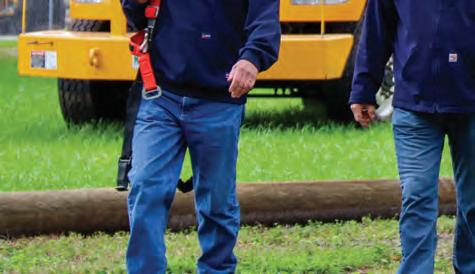




Peace River Electric Cooperative offices are closed Monday, Sept. 1, in observance of Labor Day. To all who help drive progress and build our shared future, we hope you enjoy a well-deserved break!




A Diving Legacy
Scuba shop owner fulfills childhood dream Up Close, Page 10
Moving Forward
Adaptive sports help veteran stay on track after MS diagnosis Spotlight, Page 12
A Taste of Greece
In the Kitchen, Page 16
Your district may have changed.
Dear Valued Member,
Peace River Electric Cooperative’s 10-county service area is divided into nine regional districts. District lines are drawn based on natural boundaries, shared community interests, geographic size and the number of members residing in each district.
Each year, your board of directors reviews these districts, as required by Article IV, Section 4 of the cooperative bylaws.
As a result of the changes in our service territory in recent years, the board has approved several revisions to district boundaries. Your membership may now fall under a different district. These changes took effect in August.
Refer to the map below for details on the updated district boundaries. You may also use the QR code, at right, to access our district lookup tool.
For more information, call us at 800-282-3824 or visit PRECO.coop.









Shaded
PRECO Director Earns Top Credential for Board Leadership
Ellen Bachman achieves Director Gold status, highlighting ongoing education and commitment to cooperative members.

Ellen Bachman, District 8 director for Peace River Electric Cooperative, has earned the Director Gold Credential from the National Rural Electric Cooperative Association.
An ever-changing business environment has imposed new demands on electric cooperative directors, requiring deeper understanding of industry trends, governance and the cooperative principles and business model. PRECO works closely with NRECA to sharpen this body of knowledge and ensure its directors are well-equipped to meet these challenges for the benefit of its member-owners.
The Director Gold Credential recognizes directors who have already completed the Credential Cooperative Director and Board Leadership Certificate programs, and who are committed to ongoing professional development throughout their service on the board.
“The Director Gold certificate is geared toward directors who are committed to continuing their education beyond CCD and BLC and who desire a tangible credential that reinforces their stature as part of an experienced and educated group of directors,” says Randy Shaw, PRECO’s general manager and CEO.
“Director Gold also demonstrates to co-op members those directors’ ongoing commitment to advancing their knowledge and performing their fiduciary duty to the best of their ability.”
NRECA represents nearly 900 private, member-owned electric cooperatives across the country, serving more than 42 million people in 48 states and supported by more than 7,200 cooperative directors.
Peace River Electric Cooperative is proud to serve more than 57,000 members in 10 counties. n
Peace River Electric Cooperative CEO Randy Shaw congratulates District 8 Director Ellen Bachman as she holds her Director Gold Credential certificate.

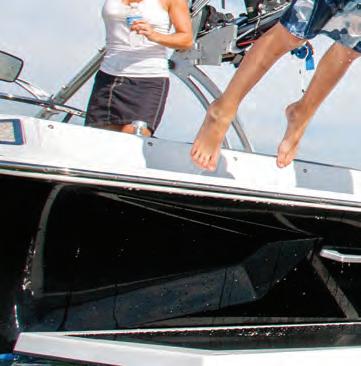


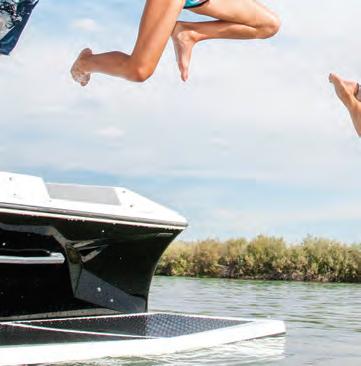

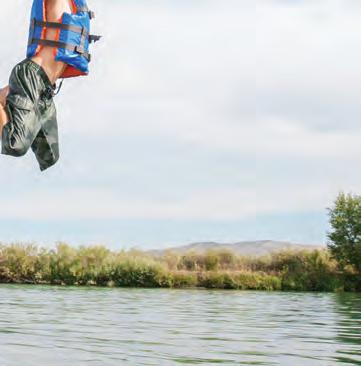



Under the Surface

Know the dangers lurking in the water before you take the plunge
By Nina Todea

inspect boats and stay up to date on maintenance.

With the intense heat of Florida’s last days of summer comes the desire to spend our days outside, whether swimming, boating or camping. Although we’re far more unplugged outdoors, many electrical hazards still accompany these leisurely summer activities—and they often lurk beneath the surface.
paralysis and drowning. Even the best swimmers will feel their bodies freeze as they lose muscular control.

Water safety is more than just boating speeds and life jackets. Electric shock drowning, dubbed the “silent killer,” occurs when faulty wiring sends electric current into a body of water. The current then passes through the body and causes paralysis, which can ultimately result in drowning.
This current isn’t nearly as visible as a bolt of lightning. According to Electrical Safety Foundation International, as little as 10 milliamps of current—1⁄50 the amount used by a 60-watt lightbulb—can cause

Often misclassified as drowning, ESD injures and kills people every year, whether it happens around a dock, or in a pool or hot tub. Unfortunately, there is no ESD statistics database, and—partly due to inaccuracies in reporting—many people are still unaware of the threat.
“Most people are unaware because there is no visible warning to electrified water,” says ESFI President Brett Brenner. “Without that visual, they are unaware of the dangers of electrified water.”
Boating and Marina
Just like your home, having your boat inspected regularly by a licensed electrician is critical. Familiarize yourself with the electrical system so you can identify and correct any potential hazards.
ESFI encourages boat owners to routinely
Ground fault and equipment leakage circuit interrupters—both safety devices required at marinas—should be tested monthly. A leakage test determines if electrical current is escaping the vessel.



In an emergency, an informed owner who knows where the main breakers are on the boat and the shore power source can respond quickly and effectively.
Alongside the safety of your boat’s electrical system, make sure all boat operators and swimmers understand the hazards so everyone works to keep them at bay. Never allow swimming near the boat, marina or launching ramp. Residual current could flow into the water from the boat or the marina’s wiring, potentially putting anyone in the water at risk of ESD.
Marina owners should do their part, too.
“Plan annual safety events at your marina where owners can learn about boat and




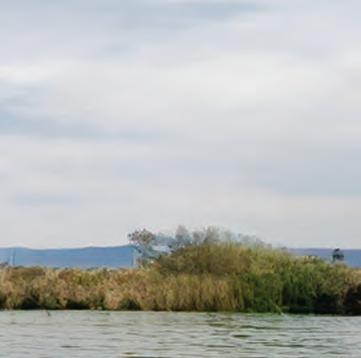

dock electrical safety and have their boats inspected by licensed electricians,” Brett says.
Home Recreation
Pools and hot tubs can be just as dangerous.
In 2020, a 15-year-old boy was electrocuted after touching exposed wire in a Texas hotel pool that had failed multiple inspections, according to news reports from the Harris County area.
Faulty pool lights, old wiring or even electrical equipment—such as pool heaters, vacuums, pumps or extension cords—can cause electricity to flood a pool or hot tub, resulting in serious injuries or fatalities.

You suspect a swimmer has been shocked. What do you do?
A telltale sign of electric shock drowning is the tingling that occurs when current passes through the body. But how can you tell if a swimmer is a victim of ESD if you’re not in the water with them?
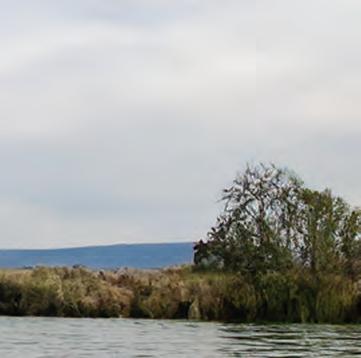
within 10 feet of a swimming pool. When practical, use battery-operated appliances near swimming pools.
• When you leave the pool, don’t touch any electrical appliances until you are dry. Never touch any electrical appliances when you are wet or standing in water.
Camping

Water safety outdoors isn’t just about bodies of water—natural or artificial. Campers should also be cautious of rain when packing electric camping materials or traveling in RVs that hook up to power poles.
A swimmer exhibiting signs of ESD can be visibly panicked and attempting to swim away from the electrified area, or they may be motionless. If you suspect someone is being shocked, do not jump in. Chances are you will be shocked, too. Instead, follow these tips to bring everyone to safety:
Cut off all electrical power to the area. Knowing where the circuit breakers are is important to act quickly in an emergency.


Call 911 immediately. You want a medical professional to assess the situation and administer CPR if necessary.


Electric shock drowning at home often results from failing to install the correct protective devices. All underwater lighting circuits and lighting around pools, hot tubs and spas should have GCFI protection, as should all electrical outlets within 20 feet of a pool.
Safe Electricity recommends pools and decks be built at least 5 feet from all underground electric lines and at least 25 feet from overhead electric lines. To locate underground electric lines, call 811 before you dig.
Follow these tips from Safe Electricity to keep your family and friends safe:
• Do not put electric appliances

Always err on the safe side, whether you’re experiencing a light rain or a torrential downpour. Before connecting to or disconnecting an RV from a power pole, switch off the breaker. When you’re hooked up, make sure to use a dry, nonconductive item to turn the breaker back on. Doing so can also protect circuits within your camper.
If you’re unsure, ask a fellow traveler. If you’re parked in an RV park, there could be another camper willing to help.
The 2017 National Electrical Code requires marinas and boat docks to post electric shock warning signs where electricity is used near water; many campgrounds also have warning signs.
If the swimmer is still mobile and can swim toward land or exit the pool, make sure there is an area where they can exit the water without using a metal ladder. If the swimmer cannot swim to safety, throw them a life ring or extend a carbon fiber rod, such as a fiberglass rescue hook. Any lifesaving efforts should be made with an insulated device.

“While you cannot prevent individuals from acting on their own accord, posting signs prohibiting swimming, as required by the 2017 NEC, is an easy way to help prevent ESD,” Brett says.
However, the responsibility does not solely fall on these signs, Brett says. Swimmers, boat operators and marina owners should all be aware of electric shock hazards and how to prevent them.
“Unknowingly, many swimmers and boat and marina operators place themselves in the face of danger,” he says. “This innocent act of fun can turn tragic. Raising awareness among swimmers and marina and boat operators can help prevent ESD or other electrical injuries while out on the water.”

ADOBE STOCK PHOTO BY LUGOSTOCK
PEACE RIVER ELECTRIC
BOARD OF DIRECTOR Elections
Peace River Electric is a member-owned electric distribution cooperative. As part-owner of the co-op, you have a voice in who serves on its board of directors.
To ensure strong local leadership, members elect directors, on a rotating basis, from each of our nine districts. In 2026, terms are expiring for Districts 1, 4 and 7.
If you would like to run for a seat on the board of directors, there are two ways to qualify for the ballot: nomination by committee or nomination by petition. Contact the cooperative for details and official forms.
BOARD QUALIFICATIONS
Anyone who meets the qualifications is eligible to serve as a director. For a complete listing of director qualifications, please read Article IV, Section 2 of the cooperative’s bylaws. Copies are available online at PRECO.coop or any PRECO office.
If you have questions about the election process, please contact Ashleigh Hayes at 800-282-3824 or Ashleigh.Hayes@preco.coop.
ELECTION TIMELINE
SEPTEMBER 2025
Board of directors appoints members of the nominating committee.
DECEMBER

MAP OF DISTRICTS 1, 4 AND 7
NOVEMBER 2025
Nominating committee information is published in Florida Currents. Qualified candidates should contact the committee if interested in running for a seat on the board.


Scan here to verify your district.
DIRECTOR TERMS EXPIRING
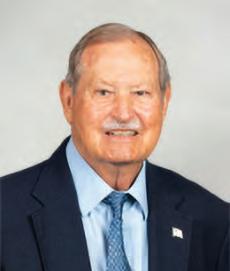
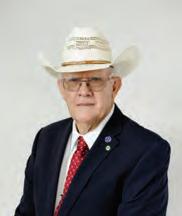

2025
Nominating committee reports director candidates.
FEBRUARY 2026
Members vote for directors at district meetings.
JANUARY 2026
Nominations by member petition must be submitted by Jan. 2. District meeting and candidate information are mailed to voters in each voting district.
MARCH 2026
Newly-elected board members are seated at PRECO’s Annual Membership Meeting.
Leonard Crawley District 1
Hollis Albritton District 4
Chris Portale District 7


“Now
— Darlene & Jack B.,
CA

Doctor recommended TV•Ears powerful assistive listening device has helped millions of people enjoy their favorite television shows, movies, and streaming content without disturbing others.
Voice Clarifying Audio® works better than hearing aids for watching TV as it eliminates background noise and boosts hard to hear television dialog making voices, whispers, and accents understandable.
120db of volume provides extra power not found in hearing aids or regular TV headphones. Hear as loud as you want on the headset while others listen to the TV at a comfortable volume.





















































A Legacy Diving




Story and photos by Theresa Sterling
One of Savanna Christy’s earliest memories is of her father, wearing a wetsuit, bursting into the Fort Walton Beach day care center where she was napping. A whale shark had been spotted in the waters off Destin, and Mark Christy was going to get little Savanna out on the water to see the gentle giant up close—nap or no nap.








“There isn’t a time that I remember not being in the water with her,” Mark says. “It’s just always been what we do.”
Mark is a boat captain and scuba









Scuba shop owner fulfills childhood dream




divemaster. He learned to dive in the Red Sea during his time in the Air Force in the 1970s, and Okaloosa County has been his home since 1985. Savanna grew up behind the counter at ScubaTech of Northwest Florida in Destin, where she spent summers with Mark while he managed dive operations and skippered the shop’s excursion boat, Sea Cobra.
“If he had to take a group out on the boat, I stayed in the shop and they watched me,” Savanna says of the staff and owners, Nancy Birchett and Carla Moore.
Nancy founded the business in 1986.






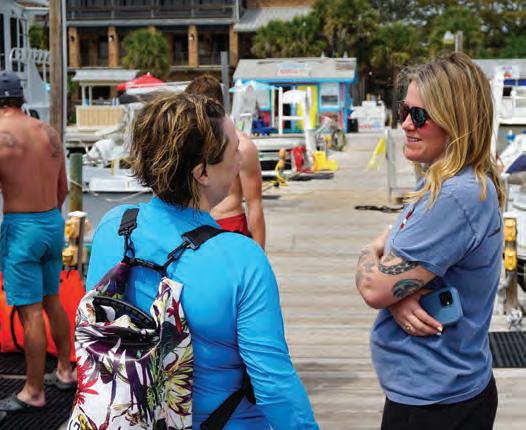

Carla joined later and retired several years ago.
The shop was Savanna’s home and playground every summer while she was growing up.









Diving Into the Business


“Pretty much as soon as I could form full sentences, I was answering the phone,” she says. “The story goes that when I was really little and would ask when my daddy was coming back, they’d just tell me to draw another picture.”


Earlier this year, Savanna, now 32, took the helm at ScubaTech, a full-service dive center offering charters, courses, equipment sales, rentals and servicing. It’s one of just two dive shops in Destin.
“This

























































“This has been a dream of mine for a long time, but I wasn’t sure how it would work out,” she says of owning the business. “I made the decision in October 2023 to take the leap, and it took over a year to figure out everything.”























Savanna stepped down from her role as executive director of Keep Florida Beautiful, where she served for six years, to work through the process of taking over the shop.
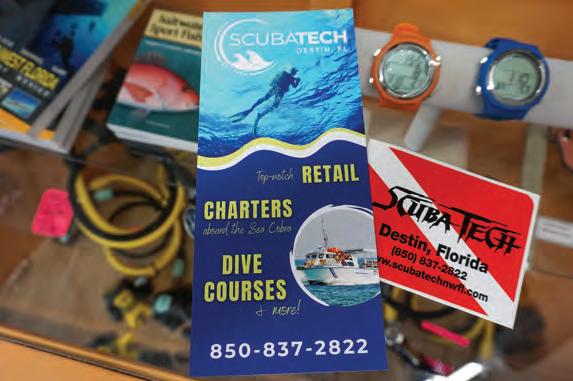












ABOVE: Savanna Christy, right, greets members of a dive group as they return to the marina in Destin.
RIGHT: As ScubaTech’s new owner, Savanna designed a new logo and print materials for the next iteration of the 39-year-old company.





Along the way, her aim stayed true and her passion unwavering. She earned undergraduate and graduate degrees in environmental studies and aquatic environmental science, respectively, from Florida State University. She worked for the Florida Department of Environmental Protection and the Florida Fish and Wildlife Conservation Commission. She holds certifications for divemaster, open water diver and rescue diver, led reef cleanups and worked with the National Oceanic and Atmospheric Administration’s Marine Debris Program.
Buying ScubaTech was a homecoming.
“Nancy had said for years she was going to sell, and multiple times that almost happened,” Savanna says. “The timing just lined up, and it kind of felt like it was supposed to be me.”
some healthy competition between the two businesses, there wasn’t much collaboration.
That nearby shop is also turning over to a younger generation, and Savanna has already forged a relationship with the new owner, also a woman. They shared a float in the Christmas boat parade and will collaborate on a late summer dive for Women’s Dive Day. On Memorial Day, both shops offered free dives to veterans and active and retired military.


One of Savanna’s first changes as owner has been a new logo and name. The business is now ScubaTech Destin.
childhood and the bond she shares with her father, whom she credits with fueling her passion for the ocean and wildlife.
Nancy says the company she founded is in good hands, and she hopes Savanna finds her niche as she did over the past 39 years.

Broadening Horizons
Destin’s other dive shop is just two blocks away from ScubaTech. It has been in business for 33 years, and although there has always been a working relationship and











“Savanna was raised at ScubaTech from a very young age while her father worked on the Sea Cobra,” Nancy says. “I hope and pray Savanna continues to teach the great sport of scuba diving and meets the wonderful dive family that I have grown to love.”




“I have plans for developing the business further,” Savanna says. “We have classroom space, we have meeting space and we have room for a pool. Right now, we contract with the other dive shop to use their pool, working around their schedule. We can teach at the aquatic center or at Vortex Springs, but having our own pool would be better for our students.”















With the drive to help others safely explore the peaceful beauty beneath the ocean’s surface, Savanna starts her next chapter. At the same time, she’s circling back to her
















































LEFT: Savanna looks at photos of her Destin dive shop’s early days.
Savanna spends time with her father, Mark Christy, on the Sea Cobra.
MOVING FORWARD


Adaptive sports help former servicewoman stay on track after multiple sclerosis diagnosis
By Drew Woolley
After 14 years in the U.S. Navy, Sharona Young noticed something was off. She joined the military at age 17 to see the world. And she did, traveling in Europe, the Mediterranean, Puerto Rico and across the United States. However, in 2013, she began experiencing tingling and numbness in her hands and arms.
cord—retired from the Navy in 2014.
Transitioning out of military life and coming to understand her new reality was a challenge. That year, one of Sharona counselors suggested she try adaptive sports. Although she had never been a competitive athlete, she gave it a shot.
“I was ready to try something new to get out from being isolated,” Sharona says. “Finding out you have an incurable
I’ve always enjoyed bike riding, so it was pretty cool to find out that I could still enjoy that, just in a different way.
—Sharona Young
“At first, I just thought maybe I slept wrong,” she says. “I was on crutches at the time for an unrelated foot surgery, so I thought maybe it was from using the crutches. Then my doctor had me do an MRI to make sure I didn’t have any pinched nerves, and that’s when they saw I had some swelling and a couple of lesions at the base of my brain and upper spinal cord.”
Sharona, diagnosed with multiple sclerosis—a chronic autoimmune disease that affects the brain and spinal
disease is pretty devastating. So, I was going through a period of depression and just hopelessness. That was a way for me to kind of get out the funk and try something new.”
Racing Ahead
One of the first sports Sharona took up was recumbent cycling. She enjoyed biking as a hobby before her diagnosis, so she was encouraged to learn it was an activity accessible to her.
“I’ve always enjoyed bike riding, so it


was pretty cool to find out that I could still enjoy that, just in a different way,” she says.






Her lack of competitive experience did not hold Sharona back as she took to racing almost immediately. She became involved with Warrior Games through Wounded Warrior Project, which provides a range of support and services to wounded veterans.
quickly
Sharona quickly moved past her anxiety of facing off against other athletes.





“It was exciting, but there was a lot of nervousness, too, just learning to do something new in and of itself and then adding the competition aspect to it,” she says. “It’s a little scary, but it was also a lot of fun.”


Sharona quickly found preparing for competitions was the perfect motivation to keep her focused on her treatment.



“That was just a great way to get me back moving, active and working with my continued recovery,” she says. “Because it’s an ongoing process.





“Unfortunately, it was not like recovering from my injury, where—once you’re done—it’s complete. When you have something like multiple sclerosis, it’s just a continual recovery process.”


For Sharona, her new life as a



FORWARD
















As someone who enjoyed biking before her diagnosis, Sharona Young was relieved to discover she could still cycle—just in a different way.


PHOTOS
competitor opened the door to tennis, racquetball, table tennis, nine ball and other sports that helped keep her on track.
The Invictus Games
Just a few years into taking up cycling, Sharona was invited to participate in the 2017 Invictus Games in Toronto. The competition gives wounded, injured and sick armed forces personnel from around the world the chance to compete in a variety of sports.
“That was a pretty amazing experience,” she says. “Just being around different people and disabled veterans from different countries. There’s lots of camaraderie, and I got to bring my daughter and my sister. So, I got to share that experience with my family, and that was pretty cool, too.”
Not only did she compete, but Sharona brought home a medal for cycling. When
In addition to recumbent cycling, Sharona competes in tennis and a variety of other adaptive sports.
she crossed the finish line, she was so focused on her own performance that she didn’t realize she had placed third.
“Once I finished, I was exhausted and sitting in the recovery area,” she says. “They told me we had to get to the medal stand, and I thought, ‘Oh yeah, absolutely. Let’s go support whoever won.’ Then they told me, ‘No, you’re on the medal stage.’
“I was just honored and kind of taken aback at even having the opportunity to do that. So, it was a very humbling experience.”
She was also impressed by the support and resources—available throughout the competition—from organizers and fellow athletes. But nothing topped being able to share the entire experience with her daughter, Taylor.
“That was extremely important,” Sharona says. “Just being able to show her that, if you’re ever faced with a situation in your life where you have

a disability or a serious injury or something, your life isn’t going to stop. You’re still able to do things and enjoy yourself and have a fulfilling life. Don’t let that define you, and don’t give up.”
Building Strength
Sharona has not competed since the pandemic, focusing instead on rebuilding the strength and stamina she lost while social distancing. For individuals with MS, even a brief break from physical activity can result in a rapid decline in athletic performance.
Now living near Orlando, training and chasing her own goals are crucial parts of keeping her treatment and overall wellbeing on course.
“It’s been one of the main things that I rely on to help keep me moving and staying active, because that’s important,” Sharona says. “During periods where, for whatever reason, I’m not able to

get out and do a whole lot, I feel it almost immediately. Within two days of something like not walking as much, I can feel the difference. So, doing the adaptive sports and activities, it’s really been a big crutch for me to just keep moving and stay motivated to continually work on and hit my personal goals.”
Sharona says her condition has been stable lately, and she is increasingly able to use a walker to get most places, saving her wheelchair for longer-distance trips. As someone who was not always drawn to athletics, she is grateful for the impact participating in adaptive sports has had on her life and hopes others in similar situations keep an open mind about them.
“I think it’s important, especially for anybody dealing with a disability or a serious injury,” she says. “A lot of people don’t know, like I had no idea, about the adaptability of not just sports but also

Sharona won a bronze medal in recumbent cycling at the 2017 Invictus Games in Toronto.
help for everyday living. You just have to be open to something new and trying something different now.”
Learning to overcome athletic challenges has even given Sharona the conviction to make her voice heard more in her own community, sparking small changes that can improve her life and the lives of others.
Shortly after moving to a new neighborhood, she noticed one of the sidewalks outside her house was badly broken, making it difficult to get around with her walker or wheelchair.
“I sent an email to the city, and they had that thing fixed within a week,” she says. “Since I’ve been involved with adaptive sports and living with a disability myself, I’ve just learned so much. There are so many things that you don’t pay attention to unless you have to. So, I’ve definitely become more confident in that and more aware.”


Ready to Get in the Game?
If you are interested in learning more about adaptive sports, these resources can help you find programs in your area.
Move United: Since 1956, Move United has worked to ensure veterans, adults and youth with disabilities have access to sports. With nine member organizations in Florida alone, it has never been easier to get moving. Visit moveunitedsport.org to find programs and events in your area.
Wounded Warrior Project: For wounded veterans, WWP hosted 18 adaptive sportsspecific events across the country last year alone. Every program is offered at no cost to veterans or their families. For more information on how to get involved, visit woundedwarriorproject.org.
Challenged Athletes Foundation: Started in 1997 to help triathlete Jim MacLaren get the support he needed to compete, CAF has grown into a nationwide network of events and fundraisers to help challenged athletes stay in the game. With 20 partner organizations across Florida, you can find the best fit for you at challengedathletes.org.
Today, Sharona uses a cane and walker for short trips, saving her wheelchair for exercise and longer excursions. Sharona served in the Navy for 14 years before retiring.


A Taste of Greece EXPLORE
A RICH CULINARY HERITAGE




1/2 cup finely grated cucumber
1 cup whole-milk Greek yogurt
1 tablespoon fresh lemon juice
1/2 tablespoon extra-virgin olive oil

1 garlic clove, grated
1/4 teaspoon sea salt
1 tablespoon chopped fresh dill
Place the cucumber on a towel, and gently squeeze out a bit of the excess water.
In a medium bowl, combine the cucumber, yogurt, lemon juice, olive oil, garlic, salt and dill. Chill until ready to use.

Tzatziki Sauce
Recipes by Gertrude Treadaway
ADOBE STOCK PHOTO BY LILECHKA75
Moussaka
Meat ragu
2 tablespoons extra-virgin olive oil
11/2 pounds ground beef
1 large onion, minced
3 garlic cloves, minced
1 teaspoon ground nutmeg
1 teaspoon ground cumin
1/2 teaspoon ground cloves
Vegetables
2 large eggplants
1/2 teaspoon ground cinnamon
1 tablespoon tomato paste
1 cup red wine
15-ounce can crushed tomatoes
1/2 teaspoon sugar
3 large Yukon gold potatoes Sea salt 1/3 cup extra-virgin olive oil
Bechamel
4 cups whole milk, plus more if the sauce needs thinning
1 bay leaf
5 tablespoons butter
6 tablespoons all-purpose flour, plus more if the sauce needs thickening
Sea salt
Freshly ground pepper
1/2 teaspoon ground nutmeg
3 egg yolks
11/2 cup ParmigianoReggiano, grated and divided
To prepare the meat ragu, heat olive oil in a large, deep saucepan. Brown and crumble the ground beef. After it browns, add the onion, garlic, nutmeg, cumin, cloves and cinnamon.
Cook for a few minutes until the onion softens. Add the tomato paste, and stir. Cook for 2 to 3 minutes. Pour in the wine, and let the alcohol evaporate. Add the tomatoes and sugar. Simmer for 1 hour on low heat.
To prepare the vegetables, cut the eggplants into ⅓-inchthick slices. Sprinkle slices with sea salt. Place them in a colander to drain their liquids for 15 minutes. Pat dry the eggplants slices. Fry them in hot olive oil for 2 to 3 minutes. Transfer to wire rack, and set aside.
Cut potatoes into ¼-inch-thick slices. Fry the slices in hot olive oil for 1 to 2 minutes. Transfer to wire rack, and set aside.
Alternate layers of potatoes and eggplants in a greased 9-by-13-inch pan. Pour meat sauce evenly over the potatoes and eggplants.
Heat oven to 400 F.
To make the bechamel add milk and bay leaf to a saucepan. Warm it on medium heat.
Melt the butter in a large saucepan. Add flour. Cook while stirring with a wooden spoon until the roux takes on a slightly blond color.
Gradually pour in the warm milk. Using a whisk, stir continuously to dissolve any lumps and create a smooth sauce. Remove from heat. Season with salt, pepper and nutmeg. Add yolks and 1 cup grated cheese. Whisk until smooth.
Pour bechamel over the meat in an even layer. Sprinkle the remaining cheese on top.
Bake for 45 minutes or until the top is golden brown. Cool for 15 minutes before serving.
Chicken Souvlaki
10 garlic cloves, peeled
2 tablespoons dried oregano
1 teaspoon dried rosemary
1 teaspoon sweet paprika
1 teaspoon kosher salt
1 teaspoon black pepper
1/4 cup extra-virgin olive oil
1/4 cup dry white wine
Juice of 1 lemon
21/2 pounds boneless skinless chicken breast, cut into 11/2-inch pieces
2 bay leaves
Pita bread
Tzatziki sauce
Add garlic, oregano, rosemary, paprika, salt, pepper, olive oil, white wine and lemon juice to the bowl of a small food processor. Pulse until well combined.
Place chicken in a large bowl, and add bay leaves. Top with marinade. Toss to combine, making sure chicken is well-coated. Cover tightly. Refrigerate for at least 2 hours.
Soak 10 to 12 wooden skewers in water for 30 to 45 minutes. Thread marinated chicken pieces through the prepared skewers.
Prepare outdoor grill. Brush grates with a little oil, and heat over medium-high heat. Place chicken skewers on grill until well-browned and internal temperature registers 160 F.
Turn skewers evenly to cook on all sides, about 5 minutes. While grilling, brush lightly with the marinade. Discard any leftover marinade.
Serve with warm pita and tzatziki sauce.
Roasted Lemon Potatoes
Cooking spray
4 cloves garlic, coarsely chopped
1/2 cup freshly squeezed lemon juice
1/3 cup olive oil
1/4 cup yellow mustard
Heat oven to 425 F.
2 teaspoons dried oregano
1 teaspoon kosher salt
Freshly ground black pepper
2 pounds Yukon Gold potatoes, cut into 1-inchthick wedges
1/2 cup water
Arrange a rack in the middle of the oven. Coat a 9-by-13-inch baking dish with cooking spray.
Place garlic in a large bowl. Add lemon juice, olive oil, yellow mustard, oregano, salt and several grinds of black pepper. Whisk to combine. Add potato wedges to the bowl, and toss to combine.
Pour mixture into the baking dish, and spread into an even layer. Pour water over the potatoes. Tightly cover the baking dish with aluminum foil.
Bake until the potatoes are fork tender, about 1 hour. Uncover. Continue to bake until the liquid is evaporated and the potatoes begin to brown, 15 to 20 minutes.
THE GREAT PICTURE HUNT

By Dave LaBelle
As I age, I feel a far stronger affection for little children than I did when I was young. I believe most people do.
Their beautiful, angelic little faces— usually unscarred by the hardships of life—melt us.
For me, there is something calming— even healing—watching children. I can slip into a somber or even unpleasant mood, and then I hear or watch children playing when they don’t think adults can see or hear them, and I am lifted out of myself and smile with gratitude.
I am reminded of a line from an old Tom T. Hall song, “Old Dogs and Children and Watermelon Wine,” that says, “God bless little children while they’re still too young to hate.”
Perhaps it’s because we travel through time and remember those carefree days of playing in creeks and catching frogs or riding our first pony. Maybe it’s because those beautiful, angelic little faces remind us of the fleeting days when our children

or grandchildren believed every story we told them.
For beginning photographers, especially students learning in photography programs, photographing children is easier and less scary than making pictures of adults. Recognizing this, I offered assignments in beginning classes built around photographing children to help shy students build confidence and not become discouraged before approaching adults.
However, as students grew confidence and ability to approach strangers, it was understood that making pictures of children at events was too easy, the low fruit of capturing storytelling pictures. They were expected to stretch their comfort zones and photograph all ages.
But lest we “throw out the baby with the bathwater,” as the old folks used to say, we should never forget or overlook the power and beauty of innocence found in the faces of children.
In an effort to capture profound pictures, we often overlook the obvious: Innocence is the greatest beauty of all. NIKON D810, 180mm lens
ISO f/7.1100, at 1/500
Shining Light

Reader Challenge
Capture a child’s face while giving special attention to the eyes. As much as possible, fill the camera viewfinder with the face. Use a telephoto lens if you have one. Above all, be patient. Watch, become invisible, anticipate, always ready for those revealing moments. Always watch the light, the truly magical ingredient to most great photography.
Email your best image (just one, please) with caption information, including an explanation of how it affects you, to gph@pioneer.coop. We may share submissions on our website and social media channels.

Photographer, author and lecturer Dave LaBelle has captured special moments for more than half a century, sharing tips and life perspectives. For more of his writings, visit davidlabelle.com and his blog, bridgesandangels.wordpress.com.
I made this photograph of a young rider backstage before the rodeo event. She put another cowboy’s hat on hers while awaiting her turn to saddle up and carry a flag during opening ceremonies.

DOVE HUNTING SEASON

Swift doves offer challenging sporting opportunities
For many hunters, dove season marks the beginning of fall and winter outdoor adventures.
Florida holds a split season with three opportunities to hunt for doves. The first segment opens Sept. 27 and runs through Oct. 19. The middle season is Nov. 8-30. The late season opens Dec. 19 and ends Jan. 31, 2026.
Hunters can bag up to 15 doves a day in any combination of mourning doves and white-winged doves. Native to Mexico and the Southwestern United States, white-winged doves expanded their range northward and eastward during the past few years. White-winged doves exhibit bold white wing patches that make distinctive identification marks in flight.
Extremely swift and agile fliers, doves make challenging and difficult aerial targets. Mourning doves can fly more than 55 mph with twisting, erratic flight patterns. Their broad, elliptical wings make distinctive fluttering whistles, especially noticeable when the birds flush or land. This sound, along with their mournful cooing call that gives them their name, often alerts humans to their presence.
To hunt doves, the first goal is finding
them.. First, look for food sources. Mourning doves can consume their weight in seeds each day. Besides native grass seeds, they also like sunflower seeds, corn, millet, wheat, soybeans and peanuts.
To digest rough seeds, mourning doves must swallow small pieces of gravel or sand. Therefore dove hunters should look for places where birds can swallow grit. Hunters might find birds “dusting” or picking up bits of rock around grit piles or sandy patches.
In addition, doves must drink water every day to aid in their digestion, so they frequently stay around streams, ponds and other water sources. They don’t need a massive lake like Rodman Reservoir. Just a puddle in a road rut suffices. Look for doves on low, sloping shorelines, sandbars with scrubby brush, cattle watering holes and other water sources.
Doves prefer open fields or grasslands punctuated by occasional trees, brush or fencerows. They tend to avoid marshes, swamps and thick forests, but they do feed along forest edges and in clearings. While driving country roads, hunters regularly spot doves sitting on power lines or fences.
Most dove hunters wait along timberlines or field edges to intercept birds flying from
their roosting to feeding or watering areas and vice versa.
For people too impatient to wait for birds to fly over them, jumping doves may be an option. Hunters can walk through fields of low brush or along forest edges and fencerows, hoping to flush birds from thick cover.
Dove season offers a great opportunity to introduce youth to hunting. In a good location, those new to the sport can fire their guns many times. They don’t need to sit still all day, but can move around, talk and socialize.In the right spot, limits can come fast. Bring plenty of ammunition.
Season dates and other regulations may differ on public hunting lands, so always check the regulations before hunting anywhere.
For more information on hunting migratory birds in Florida, visit myfwc.com/hunting/regulations/birds.

John N. Felsher is a freelance writer, broadcaster, photographer and editor. He’s written more than 3,500 articles on a wide variety of outdoor topics. Contact him at j.felsher@hotmail.com or through Facebook.

Power Life
Essential tips for home electrical safety
By Abby Berry and Nina Todea
Electricity powers nearly every aspect of modern life, but if handled improperly, it can pose serious risks, including injuries and property damage.
Your electric utility understands the risks associated with improper electricity use, which is why we’re committed to reminding you to stay vigilant and practice electrical safety year-round.
By following key safety practices, you can reduce the risk of electrical hazards and ensure your family stays protected. Here are eight essential tips for powering up safely at home:
1. Be vigilant. Regularly inspect your home’s electrical system, including smoke alarms and carbon monoxide detectors, for signs of damage or outdated components.
Electrical fires can start silently and out of sight, making functional smoke alarms and carbon monoxide detectors essential for early detection. Test alarms monthly, replace batteries annually and ensure you have alarms installed in key areas of your home, including inside and outside of bedrooms.
2. Replace frayed electrical wires or cords. The Electrical Safety Foundation International estimates roughly 3,300 home fires originate from extension cords every year, primarily due to overloading, overheating or fraying. If you’re relying on extension cords as permanent power solutions, consider contacting a qualified electrician to install additional outlets where you need them.
3. Use surge protectors. Safeguard your sensitive electronics and appliances with surge protectors. These handy devices help divert excess voltage away from your electronics, reducing the risk of damage or electrical fires. Not all power strips include surge protection, so read the product label carefully. Additionally, surge protectors can lose effectiveness over time and should be replaced when damaged or outdated.
4. Practice safe use of power strips. Avoid overloading electrical outlets with power strips
Avoid overloading electrical outlets with power strips that exceed the outlet’s capacity. PEXELS PHOTO BY ZION
Safel y
that exceed the outlet’s capacity. High-energy devices, such as heaters, microwaves and hair dryers, should be distributed across multiple outlets. Overloading an outlet with “busy” power strips can lead to overheating and create a fire hazard, so be sure to check the power strip’s wattage rating before plugging in items.
5. Don’t mix water and electricity. It may seem obvious, but accidents involving water contact with electrical items happen. Always keep electrical appliances and devices away from water sources, such as sinks, bathtubs or swimming pools. Make sure your hands are dry before touching any electrical switches or appliances. Never handle electrical devices with wet hands. Ground Fault Circuit Interrupters should be installed in areas where water and electricity are typically in proximity, including kitchens, bathrooms and outdoor outlets.
6. Hire a qualified electrician for major work. While DIY projects may seem like a tempting way to save money, working with electricity requires specialized knowledge of your home’s electrical system and national safety codes. Cutting corners can be a costly mistake beyond your wallet.
Recent data from the U.S. Consumer Product Safety Commission reports nearly 400 electrocutions in the United States each year, 14% of which are related to wiring hazards. A licensed electrician has the expertise to handle major electrical tasks, such as installing new wiring, upgrading your circuit breaker panel or troubleshooting electrical issues. When it comes to electricity, safety should always be your priority—leave the major jobs to the experts.
7. Educate family members. One of the best ways to ensure the safety of everyone in your household is to talk about electrical safety. Teach children not to play with electrical outlets or appliances, and ensure they understand the potential dangers of electricity. Create and practice a home fire escape plan that includes electrical safety precautions in the event of an emergency.
Practicing electrical safety at home is essential for protecting your family, property and peace of mind. Remember, electrical safety isn’t just a one-time effort—it’s a year-round responsibility. Taking these steps can help ensure a safer, more secure home for you and your loved ones. n
Electrical Fire
Do’s and Don’ts
Homeowners should always take precautions to mitigate the risk of electrical fires and other electrical hazards—but what happens if those precautions are still subject to human error?
Faulty wiring, power surges or malfunctioning appliances can ignite flames in an instant. In those critical moments, knowing exactly what to do can mean the difference between safely containing an electrical fire and facing a devastating loss. Follow these guidelines if an electrical fire breaks out in your home:
Do cut the power: If a faulty appliance causes the fire, unplug it immediately. If you can’t reach the plug but have a safe path to your home’s breaker panel, turn off the electricity at the panel.
Do use a fire extinguisher: Not all fire extinguishers are created equal. Electrical fires should be extinguished with Class C fire extinguishers, which are specifically designed to address electrical fires. Fire extinguishers should only be used on small, contained fires. Electrical Safety Foundation International recommends homeowners buy a fire extinguisher large enough to effectively put out a small fire, but not so heavy that it is difficult to handle. In a pinch, small electrical fires can also be smothered with a fire blanket or baking soda.
Don’t use water: Although it may be your first instinct, water conducts electricity and can make the fire worse or cause electrocution.
Do evacuate immediately: If the fire spreads out of your control, get everyone out of the house and to safety, then call 911. Closing doors behind you can slow the spread of the fire.



FLORIDA CURRENTS
PLANNER


All ages can find something new and exciting around every corner of the state. Filled with rich history, abundant natural beauty and diverse events all year, Florida has something fun for everyone.
PENSACOLA
Sept. 4-6
Flora-bama Bulls on the Beach


Get your tickets early for Flora-Bama’s most anticipated events of the year. Bring the family to experience three nights of live rodeo action featuring Professional Bull Riders from all around the country. A portion of the proceeds from this event go to St. Jude Children’s Research Hospital. On Thursday, those 12 and younger can participate in a coloring contest bike giveaway, followed by professional bull riding to round out the night. Friday and Saturday night features the Professional Bull Riders in the adult bull riding competition.
florabama.com/bulls-on-the-beach; 850-492-0611
PENSACOLA
Sept. 12
Cinemas in the Sand

Presented by the Santa Rosa Island Authority, this beloved tradition invites locals and visitors alike to gather under the stars, feel the sand between their toes and enjoy “Toy Story” against the breathtaking backdrop of the Gulf of Mexico. Cinemas in the Sand is sponsored by Postcard Properties and Postcard Realty Inc. visitpensacolabeach.com/cinemas-in-the-sand; 850-530-3349
ISLAMORADA
Sept. 13
Swim for Alligator Lighthouse
Join this world-class, 8-mile, open-water swim to the iconic Alligator Reef Lighthouse and back. This challenging experience can be conquered solo or on relay teams of two, three or four people. Proceeds from the race go toward the effort to fully restore and relight the 152-year-old lighthouse. It’s not for the faint of heart. This is tropical open water swimming in its purest form. Year after year, people return for the epic adventure and deep sense of community that has made conquering Alligator Lighthouse a milestone in the sport.
swimalligatorlight.com
PENSACOLA
Sept. 13
Rock4Vets


KEY LARGO
Sept. 5-12
Fall For Quilts Show
The Florida Keys Quilters present their show from 10 a.m. to 5 p.m. in the Key Largo Library Community Room at Tradewinds Plaza, 101499 Overseas Highway.
The 2025 FKQ Raffle Quilts, “Tropical Waves” and “Quilt in a Box,” will be on display alongside quilt-making demonstrations. Tickets for the raffle are $2 each or $5 for three tickets. The queensize raffle quilts measure 91-by-85 inches. Quilts remain on display during September. Admission is free.
www.tinyurl.com/FLKeysQuilters; 305-451-2396


This is the third year of this 5K run/walk. It includes DJ music, food vendors and fun for the whole family. Funds raised benefit the homeless and struggling veterans and community. We will lend immediate assistance to those in need, such as housing support, health care services and essential supplies. The contributions directly enhance the lives of those who have made significant sacrifices for our nation. choosepeoples.com/rock4vets

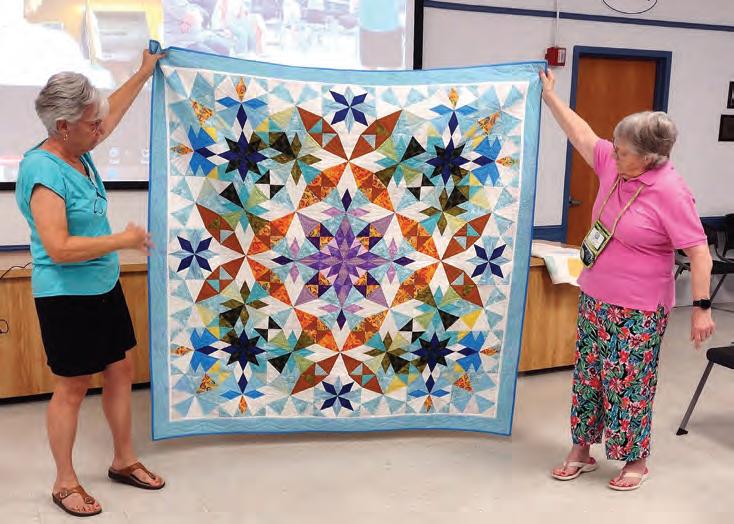



PHOTO BY GWENN MAUE

KEY WEST
Sept. 14
Sheriff’s Animal Farm Open House


Visit the family-friendly Monroe County Sheriff’s Animal Farm from 1-3 p.m. the second and fourth Sundays of each month at Stock Island Detention Center, 5501 College Road. Animals include a capybara, possum, sloths, goats, birds and more. Admission is free, but donations of cash or fresh produce are welcome. new.keysso.net:8443/farm; 305-289-2351
PENSACOLA
Sept. 19
Gallery Night Pensacola
Presented by Publix, this event brings the streets of downtown to life with more than 70 art vendors showcasing their work along Palafox Street. Stroll through a vibrant, open-air market filled with artists, live performances and creative experiences, all celebrating Pensacola’s thriving arts scene. gallerynightpensacola.org
LAKELAND
Sept. 20
Girls in Aviation Day


Since 2015, young aviation enthusiasts and their families have enjoyed this free event devoted to spotlighting female aviators, careers in aviation, and all things aircraft and air travel. Children, as well as adults, can explore the Florida Air Museum, participate in hands-on STEM activities in our Skylab Innovation Center, and network with the local aviation business community, celebrating Central Florida’s rich aerospace history and culture. https://aceedu.org/event-calendar/girls-in-aviation-day-2
DESTIN
Sept. 26-28
Seafood Festival
Since 1978, seafood, art and music lovers have jammed Destin’s waterfront for this annual community fundraiser. Like all long-running events, it expanded its footprint, changed venues and continued to add family-friendly fun. While guests shop and eat their way along a 1-mile stretch of Harborwalk Village lined with food, artisan and merchandise vendors, they’ll also be entertained with live music from the festival’s five stages. Saturday night includes fireworks and a Kids Zone with face painting and a casting contest. destinseafoodfest.com




BAY COUNTY
Sept. 30-Oct. 4
Central Panhandle Fair
Beginning each day at 5 p.m., the fair includes new activities and events for the whole family to enjoy. Businesses or organizations that want a booth in the main building can call us at the number below. Leave a message if there’s no answer and we’ll get back to you. We look forward to seeing you at the fair. baycountyfair.org; 850-769-2645

AVON PARK
Sept. 28
Love Story: Taylor Swift with Rikki Lee Wilson

With meticulous attention to detail, Rikki Lee Wilson brings Taylor Swift to life on stage, channeling her look, sound and charisma. Backed by a live band, the show features multiple costume changes and a dynamic stage presence, creating an unforgettable experience for fans of all ages. Rikki not only sounds like Taylor, she looks the part too, mesmerizing Swifties and transporting them into the exhilarating world of a Taylor Swift concert. Don’t miss this celebration of music, joy and pop star magic. sfscarts.org; 863-784-7178
HOW TO INCLUDE UPCOMING EVENTS



Want to share a family-friendly event with the readers of Florida Currents? Head online and enter the details at tinyurl.com/FloridaCurrents or use the QR code for easy access. Make sure to submit the item at least 60 days before the event (due to press deadline). If you own rights to a print-quality photo promoting your event, include it with photo credit information.





PHOTO COURTESY OF BAYCOUNTYFAIR.COM







When I was a little girl in Mississippi, I would visit my Aunt Pearl, sit on the front porch and smell the heavy perfume of her gardenias. It was a little slice of heaven. When I moved three years ago and got a house with a porch, I knew exactly what I wanted to plant first: a row of gardenias so I could smell them as I sat out there. I wanted to re-create a memory.
In my excitement to get them blooming as soon as possible, I skipped over an important step: a proper site analysis.
Gardenias are acid-loving plants, which worked great in north Mississippi’s rich clay soil that is naturally acidic. My soil was the exact opposite—sandy with little organic matter and a pH of 7. Gardenias need a pH of 5 to 6.5.
The first indication that something was amiss was the yellowing foliage. The leaves were showing interveinal chlorosis. This is a fancy way of saying the leaf veins were still green, but the rest of the leaf blades were yellow. It’s an indication of low iron, caused in this instance by high soil pH.
The pH of soil affects how nutrients can be absorbed by plant roots. When soil pH goes higher than 6.5, iron becomes less available to the roots. No matter how much iron may be in the soil, when the pH is too high, the plant roots cannot absorb it.
Organic matter plays a major role in the ability of plant roots to absorb iron. Florida’s sandy soils have low organic matter, typically less than 5%. However, with determination, my husband and I set out on a mission to fix my gardenias. We had already amended the bed before planting and mulched with pine straw, both things that should help.
Next, we applied fertilizer.
You should fertilize gardenias in March and September with an acid-forming fertilizer, according to the University of Florida. Still, our gardenias had yellow leaves.
We decided to get iron into my plants by cutting out the middleman. We skipped right past the soil and applied iron in

Gardenias and Why pH Matters


a foliar spray directly to the leaves. That helped, but it was a temporary fix. As months went on, the gardenias became more yellow and dropped more and more leaves. I started to wonder how in the world people got blueberries to grow in Florida, as they prefer a low pH as well. I learned that many blueberries are grown in containers where the soil can be controlled or in mounds of pine bark fines, which is an acidic growing medium.
We finally decided to take another approach. We had a garden tour scheduled and a dozen crispy, half-dead gardenias in the front yard. So, we transplanted them to the backyard around the patio. At least I could smell them when I sat out there.
I read that lowering the pH of your soil in Florida is nearly impossible, but we were going to give it a try. We heavily amended the new beds. We dumped out several bags of pine bark fines, taking a cue from the blueberry growers. We put out elemental sulfur. Don’t try that at home, as it can kill your plants if you use too much, but at this point, we had nothing to lose.
We mulched with pine straw and applied fertilizer. Do you know what we got for our efforts? Sad little sticks that used to be gardenias. The moral of the story is this: Right plant, right place really matters. Getting a pH test before planting is something you should do. Fighting with nature is a losing battle.
The good news is that you can learn from our fool’s errand and send your soil to the UF/IFAS Soil Lab in Gainesville for a pH test before you plant.
As for my front yard, we replaced the gardenias with tea olive in time for the garden tour. Tea olive is a tough evergreen shrub that has a sweet scent when in bloom.

Tonya Ashworth is an environmental horticulture agent for Duval County UF/IFAS Extension.
ADOBE STOCK IMAGE BY WICHATSURIN
MINIGRANTS FUND
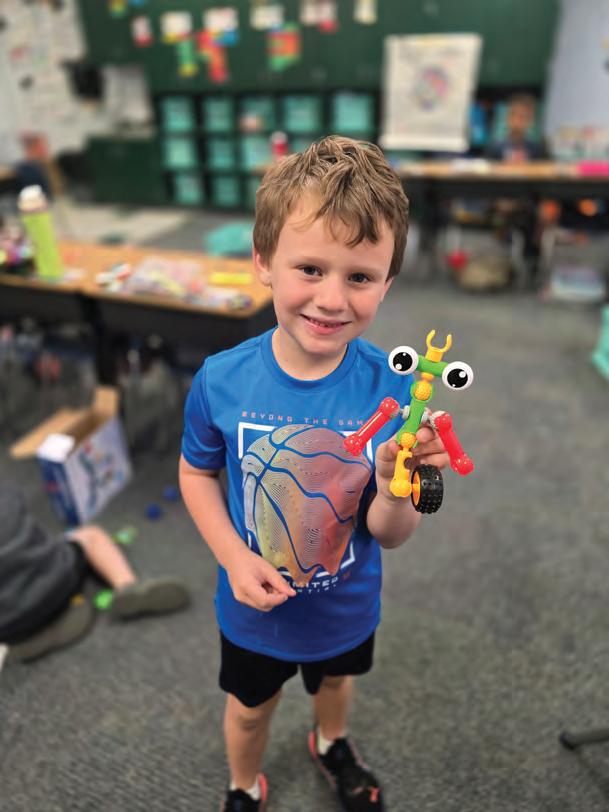
Crea ve Learning
IN LOCAL CLASSROOMS
At Peace River Electric Cooperative, we believe in the power of education and the importance of fostering creativity and innovation in the classroom. Through our Operation Round Up Teacher Mini-Grant Program, we continue to support educators in bringing their innovative project ideas to life.
Since 2021, PRECO’s Operation Round Up charitable foundation has awarded more than $62,000 in mini-grants to 144 classrooms across our service area—funding projects that spark curiosity, inspire learning and create hands-on opportunities for students.
What are teacher mini-grants?
Teacher mini-grants provide financial assistance to teachers who want to enhance the learning experience for their students. Whether it’s a unique science experiment, an interactive art project or a cutting-edge technology integration, we want to help make your vision a reality with a $500 mini-grant.
Who can apply?
All teachers within our service area are eligible. We encourage educators from pre-K through high school across all subject areas to submit their creative, impactful project ideas.
Apply online at PRECO.coop/teacher-mini-grants. The deadline to apply is Oct. 3.

Bringing STEM Dreams to Life
“It’s pretty surreal and humbling when your dream becomes a reality! STEM Bins have been something I have wanted to use in my classroom with my students. I have always been passionate about elementary engineering, STEM and the incorporation of purposeful play in the classroom.
The purpose of the STEM bins in my classroom has been to have students work cooperatively together with educational movement. Students look forward to our STEM Bin days throughout the week. These bins take the place of our weekly morning work. Students are excited to pick the STEM Bin for their group as well as to work cooperatively with different students daily and weekly!
This project could not have been done without the help of Peace River. Thank you again for your support and making a dream become a reality, not just for me but the students the bins will reach year after year.”
CASSANDRA GRIFFIN, FIRST GRADE TEACHER AT ANNIE LUCY WILLIAMS ELEMENTARY SCHOOL
CUT YOUR UTILITY BILLS

Cool Savings
By Miranda Boutelle
Q: What are some ways I can improve the efficiency of my refrigerator and freezer?
A: When exploring ways to be more efficient with refrigerators and freezers, we often find ourselves stuck between convenience and conserving energy. While you can upgrade to newer equipment, care and equipment habits can be just as important to saving energy.
The U.S. Department of Energy explains what to look for in existing equipment and new appliances. In general, the larger the refrigerator, the more energy it uses. The most efficient models are typically 16 to 20 cubic feet. Models with the freezer on top tend to use less energy than bottom freezers or side-by-side units. A refrigerator 15 years or older uses about 35% more energy than an Energy Star-certified model.
Let’s explore some tips to keep your refrigerator running efficiently.
Keep it organized. One of the biggest issues with refrigerator energy use is keeping the door open. An organized fridge makes food items easier to find, minimizing open-door time and keeping cold air inside. Place items in the same spots so they are easier and faster to find. I tell my children to take a quick look inside at the options and close the door while they are deciding what to eat.
Keep it clean. Regularly cleaning the gasket—a flexible strip around the perimeter of the fridge door—ensures a tight seal between the door and the unit to keep cold air inside. If the gasket does not seal tightly, it should be replaced.
Removing and cleaning the vent at the bottom of the unit can help airflow. For the coils at the back, use an extended cleaning brush instead of moving the fridge and risking injury.
Keep food safety in mind. The Department of Energy recommends setting the refrigerator temperature between 35 and 38 degrees and the freezer at zero degrees.
If you have a second refrigerator or freezer, here are some things that can help you save energy.
Do you need it plugged in year-round? Perhaps you can keep it empty and unplugged for part of the year. Maybe you only really need it during the holiday season. Unplugging it for the months you aren’t using it saves energy, and you still have it as a backup when you need it.
Empty it before restocking. If you are a hunter or buy meat in bulk, this allows you to avoid food waste and unplug the extra appliance when it is not needed.
If possible, consider the location. Keeping the second fridge or freezer in a cool basement versus a hot garage requires less energy.
Embracing simple cleaning and food storage habits can help you be more efficient with your in-home refrigeration.



Miranda Boutelle has more than 20 years of experience helping people save energy. She has worked on energyefficiency projects from the Midwest to the West Coast. Today, Miranda is chief operating officer at
Keep your refrigerator gaskets clean to ensure a tight seal around the door. PHOTO BY MARK GILLILAND







Saving Energy During Peak Times Bene ts All


Conserving electricity during times of peak energy use not only lowers your monthly bill, it can benefit our entire community.
Peak times are periods of the day when the demand for electricity is highest. Think early mornings when people are getting ready for work or school and evenings when families return home, cook dinner and unwind with electronics. When everyone uses energy at once, it adds pressure on the electric grid.
Peace River Electric Cooperative works around the clock to ensure electricity flows to your home whenever you need it. Behind the scenes, an enormous and intricate system is at work—one of the most complex machines in the world: the U.S. power grid. The grid is made up of three major interconnections that span the country, each managing supply and demand through regional authorities to keep the lights on and our economy running smoothly.
Electricity comes from a diverse mix of sources, including hydropower, natural gas, coal, solar and wind. Some power plants can respond quickly to spikes in demand, while others

are less flexible. Once energy is generated, it travels through high-voltage transmission lines to local utilities, like PRECO, which then delivers it to your home or business through distribution power lines.
When electricity demand surges during peak times, it’s more expensive to generate or buy power. If supply can’t keep up, the risk of outages increases. That’s why using less energy during peak hours is more important than ever. It not only eases strain on the grid but also helps you save money.
So how can you “beat the peak?” Start by adjusting your thermostat a few degrees during peak hours. Smart thermostats can automate this for you. Delay using energy-hungry appliances like ovens, clothes washers and dishwashers until later in the evening. Charging your electric vehicle overnight instead of right after you get home can also help.
Small actions taken by many households can lead to big results. When we all work together to reduce energy use during peak times, we protect our power grid, help control costs and ensure reliable electricity for our communities.


To save energy, delay using energy-hungry appliances like ovens until later in the evening or during off-peak hours.

Peekaboo
From the setting of the sun to the creatures that make their homes in your backyard, Florida is filled with beautiful moments. The scenes you capture have a chance to brighten someone’s day.
From time to time, we share some readers’ photos in this space. If we use your photo here, we will send you your choice of a $25 gift card to REI or Amazon.
To submit your photo, email a JPEG file to photos@floridacurrents.com. Include “Before You Go” in the subject line. Please share a bit about what inspired you to make your photo.




A hybrid hen spends time with one of her little ones in Lake Placid. PHOTO BY KATHRYN DUBARRY



PRECO.coop
800-282-3824
TO REPORT A POWER OUTAGE
Use the SmartHub app.
Text OUT to 800-282-3824.
Call 800-282-3824.
CORPORATE HEADQUARTERS
210 Metheny Road
Wauchula, FL 33873
MANATEE SERVICE CENTER
14505 Arbor Green Trail
Lakewood Ranch, FL 34202
BOARD OF DIRECTORS
District 1
LEONARD CRAWLEY
District 2
KENNETH ODEN
District 3
BRUCE VICKERS
District 4
HOLLIS ALBRITTON
District 5
MARIE DASHER
District 6
DAN PUCCIO
District 7
CHRIS PORTALE
District 8
ELLEN BACHMAN
District 9
WILLIE DAWES
BOARD MEETINGS
Sept. 23
Oct. 28
Nov. 18
Any PRECO member may attend board meetings. Due to building security requirements and to facilitate attendance, members should contact the cooperative in a timely manner for logistical information regarding meetings.
ONLINE E-ZINE
Prefer to receive Florida Currents online? Sign up through your online account or call us at 800-282-3824
Standing Strong in Storm Season

As September rolls in, so does the height of hurricane season here in Florida—a time when preparation becomes more than just a precaution. At Peace River Electric Cooperative, being ready isn’t something we do once a year. It’s part of our everyday commitment to you.
Behind the scenes, our crews are constantly at work. Lineworkers inspect equipment and reinforce vulnerable parts of the system. Vegetation management teams trim and clear rights of way to reduce the risk of falling trees or branches causing outages. Our operations team regularly reviews and runs through storm response plans, ensuring that when severe weather hits, every team member knows exactly what to do—from restoring power to communicating with you in real time.
county or state lines—is the foundation of who we are.
But preparedness doesn’t stop with us. It starts at home, too. We encourage every member to take a few simple steps:
• Check your emergency supplies. Make sure flashlights have fresh batteries.
• Inspect and test your generator. Always operate it safely, and never indoors.
• Update your contact information with PRECO so we can keep you informed.
• Sign up for outage alerts and follow us on social media for the latest updates when storms threaten.



This time of year also reminds us of the strength in numbers. As a member of a statewide and national mutual aid network, PRECO stands shoulder to shoulder with other electric cooperatives. When major storms strike, we’re not alone—and neither are you. That spirit of cooperation— neighbors helping neighbors, even across
We can’t control the weather—but we can control how we respond and how quickly we recover. At PRECO, we’re proud of the way our employees rise to the occasion during every storm, working around the clock to restore service safely and efficiently. It’s not just a job, it’s a calling.
Thank you for trusting us to power your homes, your lives and your peace of mind. Together, we’ll weather whatever this season may bring.

